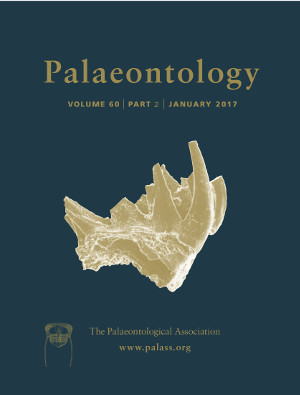Reg. Charity No. 1168330

A new basal land plant, Teruelia diezii gen. et sp. nov., is described from the shallow‐water marine deposits of the Lower Devonian (Lochkovian–Pragian) Nogueras Formation of the Iberian Peninsula (north Gondwana palaeocontinent). Teruelia is preserved as a compression fossil and consists of isotomously branched, robust stems terminated in large, fusiform, twisted sporangia. This morphology suggests that Teruelia is very probably equivalent to Aglaophyton, a permineralized early polysporangiophyte known up to now only from the Lower Devonian (early Pragian to ?earliest Emsian) Rhynie Chert in Scotland (Laurussia palaeocontinent), which represents an early terrestrial hot‐spring ecosystem. Accepted phylogenies identify Aglaophyton as sister to vascular plants. Our phylogeny‐based results identify the Aglaophyton/Teruelia biological entity (i.e. Aglaophyton anatomical characters plus Teruelia external morphology) as the most direct vascular plant precursor. It shows that at least one Rhynie Chert type plant had a much wider distribution than previously known and suggests that Aglaophyton was not restricted to hydrothermal environments, unlike other Rhynie Chert plants.